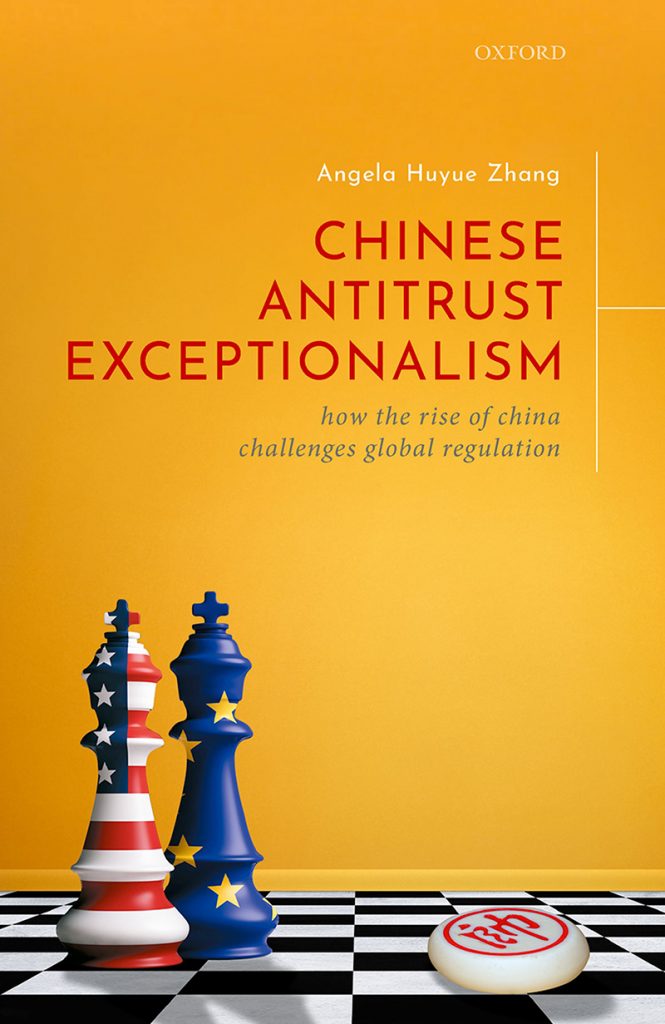May 2022 | Volume 23 No. 2
China’s Jumpy Take on Tech
In October 2020, Jack Ma Yun, the co-founder of Alibaba Group, gave a speech just days before his company’s FinTech arm, Ant Group, was about to launch the world’s largest IPO. The speech directly challenged the legitimacy of financial regulation in China. Not only did this result in severe consequences – Mr Ma dropped out of sight for several months, the IPO was withdrawn and the Chinese government launched a major regulatory enforcement campaign against tech companies including the whole FinTech sector, social media, e-commerce and ride-hailing and food services – but it also lifted a lid on the complexities and volatility of regulatory control in the country.
Dr Angela Huyue Zhang of the Faculty of Law untangled why China undertook this ‘great reversal’ of policy in a recent paper in the Harvard International Law Journal.
“In a few short months, China shifted from a previous lax and tolerant approach to a strict and aggressive one, becoming one of the most active and forceful jurisdictions in regulating the digital economy,” she said.
While some commentators speculated this was due to political infighting, Dr Zhang sees the response starting firstly with the authoritarian and hierarchical nature of power in the country, which has its roots in the Chinese Communist Party’s revolutionary past when agility and quick reactions at the top were needed to adapt to changing circumstances. “China’s volatile style of policymaking is deeply ingrained in its authoritarian governance system, where regulatory authorities need to adhere to central policy initiatives and administrative power is subject to few institutional constraints,” she said.
Bureaucratic inertia
The system means that while China’s leaders are very powerful, they are also generalists who must delegate decisions to regulators on specific issues. These regulators in turn tend to be parochial and compete with each other, and they are slow to take initiative because they fear making a misstep. “This bureaucratic inertia discourages information transmission from the regulators to the top leadership, leading to a serious regulatory lag,” she said.
Lower down the pecking order, tech companies have limited powers and have learned to work within the system by adhering to new rules while lobbying hard behind the scenes for change and building up political capital. Lowest of all are platform participants, such as consumers, small merchants, employees and drivers and courier workers, who have limited channels to voice dissatisfaction and air grievances due to censorship and suppression.
When things come to a head – as they did with Mr Ma’s speech – the leaders will swing into action but with the risk of overdoing it. “As public discontent mounts and a regulatory crisis spirals out of control, the top leadership intervenes to avoid threats to social stability. In response to the call from central top leadership, Chinese regulators at all levels quickly react by taking an aggressive stance to tackle regulatory problems,” she said.
There are advantages and disadvantages to this system – the leadership can quickly mobilise administrative resources and propaganda to respond to a crisis, but bureaucrats are constrained from exercising their independent professional judgment at an early stage, before a crisis arises. “Furthermore, when the government finally decides to act, there is a risk of administrative power abuse and over-enforcement due to the absence of a transparent enforcement process subject to judicial oversight,” she said.

Dr Zhang also recently had a book published by Oxford University Press on the wide-ranging issues involved in China’s regulatory regime, Chinese Antitrust Exceptionalism: How the rise of China challenges global regulation.
Agility over stability
In the case of the tighter regulation of the platform economy, administrative authorities have benefitted from empowerment from the top, she said. More general benefits have also accrued from measures to safeguard data security, cultivate public support, and reduce China’s reliance on the West for technologies and capital. Whether these bring about lasting improvement to social welfare remains to be seen, though, she said.
Dr Zhang calls her model of regulation in China the HAPPY model – for Hierarchical decision-making, Adaptability of leadership, the Parochial nature of regulators, the Pliant nature of firms, and the fact that platform participants such as consumers and merchants need to ‘Yelp’ to be heard.
“These five core features of Chinese regulatory governance affect and reinforce each other, resulting in regulatory outcomes that tend to favour agility over stability,” she said, adding that the model could also apply to other situations. For instance, in the COVID-19 outbreak in Wuhan, local officials largely ignored early warnings by doctors, leading to a consequential delay in controlling the virus followed by a strong-armed and rapid response from the central government.
In the meantime, she points out it is not just China but the whole world that is trying to figure out how to rein in Big Tech. China’s experience may offer lessons for global policy debate. “China presents an almost-extreme scenario where government authorities can intervene with lightning speed and velocity. But without strong institutional oversight, intense law enforcement campaigns create the risk of over-enforcement and administrative abuse.”
China’s volatile style of policymaking is deeply ingrained in its authoritarian governance system, where regulatory authorities need to adhere to central policy initiatives and administrative power is subject to few institutional constraints.

DR ANGELA HUYUE ZHANG

